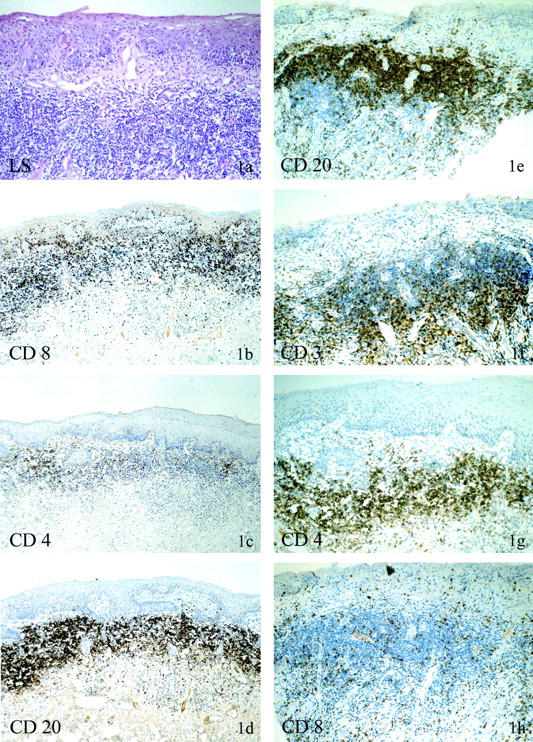Figure 1.

Immunohistochemical phenotype of LS with dense lichenoid infiltrate with and without monoclonal γ-TCR rearrangement. a–d: Patient no. 12 (123682/00), LS without monoclonal γ-TCR rearrangement. The H&E stain shows vulvar skin with parakeratosis, focal basement membrane thickening with dermal sclerosis, and ectatic venules. The lymphocytic infiltrate is predominantly dermal, dense, and band-like (a) with scant interface infiltrate. The majority of the lymphocytes are CD8-positive. Note the intraepidermal presence of CD8-positive lymphocytes (b). CD4-positive lymphocytes are sprinkled with the dermal infiltrate or occur in small clusters or individually (c). Within the dense dermal infiltrates are numerous CD20-positive B cells (d). e–h: Patient no. 34 (29185/99), LS with monoclonal γ-TCR rearrangement. CD20-positive B cells within the dermal infiltrate are also a feature of LS with monoclonal γ-TCR rearrangement (e). The B cells are located in the superficial aspects of the submucosa, whereas the T-cell population (CD3, f) is localized in the deeper aspects, creating a zonation effect. Within the infiltrate CD4-positive T cells (g) dominate over CD8-positive T cells (h), quite in contrast to the infiltrate without monoclonal γ-TCR rearrangement.
